
With the general election near, it is a good time to take a look at a brief history of voting machines and methods and the related intellectual property. The manner in which elections are conducted has changed over the years as have the various mechanisms used for voting.
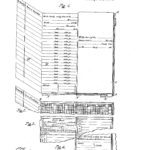 Voice Votes and Poll Books. In the United States, voice votes and poll books were used until the late 1800s. At the polling locations, voters were sworn in and then preceded to call out the names of the candidates of their choice to election clerks who recorded the votes in poll books. At that time, there was no secrecy involved with voting. On April 20, 1886, a patent was issued to William M. Kinnard of Dayton, Ohio for a combined tally sheet and poll book. (U.S. Patent No. 340,218).
Voice Votes and Poll Books. In the United States, voice votes and poll books were used until the late 1800s. At the polling locations, voters were sworn in and then preceded to call out the names of the candidates of their choice to election clerks who recorded the votes in poll books. At that time, there was no secrecy involved with voting. On April 20, 1886, a patent was issued to William M. Kinnard of Dayton, Ohio for a combined tally sheet and poll book. (U.S. Patent No. 340,218).
Early Ballots. The first ballots in ancient times were not made of paper, but were small balls or tokens made of clay or metal. The word “ballot” is derived from the Italian word ballota; the Greek root means to cast or throw. Voters were given tokens or small balls to deposit (or cast) into a container for their candidate. The candidate with the most tokens was elected. More recently, societies like the Masons used black and white balls when voting on new members. A white ball represented acceptance into the society and a black ball represented a rejection. Hence the term “blackballed”. Many early voting machines used small balls, which enabled a voter to deposit a ball into the container representing the voter’s candidate of choice. The machine prevented a voter from casting more than the allowed number of votes in each race, and maintained separate ballot containers for each candidate. This method was used into the late 1800s—even after more advanced methods of voting were invented and in use.
Paper Ballots. Paper ballots were in use by the time the 12th Amendment was ratified (1804), evidenced by the following excerpt from the 12 Amendment: “they shall name in their ballots the person voted for as President, and in distinct ballots, the person voted for as Vice-President, …” Early on, voters wrote the name of the candidate on a slip of paper and deposited it in a ballot box. Candidates and political parties eventually began providing preprinted partisan ballots. In 1838, the London Working Men’s Association (Chartists) pushed for election reforms and secret ballots in England. The Chartists had influence in Australia and, in 1856, Victoria, Australia was the first to use uniform official ballots. The ballot was printed by the government and counted by hand; it became known as the Australian Secret Ballot. In 1888, New York and Massachusetts were the first states to use the Australian ballot and it was widely used in most states by 1940.
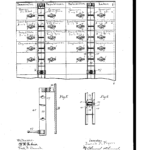 Lever Voting Machines. Jacob H. Myers of Rochester, New York was granted a patent for the first mechanical lever VOTING MACHINE (U.S. Patent No. 415,549). This technology, eventually called Myers Automatic Booth, machine-counted votes. In 1892, the Myers Automatic Booth Lever Machine was first used in Lockport, New York. Lever machines were on the cutting edge of technology for the day and improved versions of these machines were slowly adopted through-out the country. By 1930, lever machines had been installed in virtually every major city in the United States.
Lever Voting Machines. Jacob H. Myers of Rochester, New York was granted a patent for the first mechanical lever VOTING MACHINE (U.S. Patent No. 415,549). This technology, eventually called Myers Automatic Booth, machine-counted votes. In 1892, the Myers Automatic Booth Lever Machine was first used in Lockport, New York. Lever machines were on the cutting edge of technology for the day and improved versions of these machines were slowly adopted through-out the country. By 1930, lever machines had been installed in virtually every major city in the United States.
Samuel R. Shoup and Ransom F. Shoup made a number of improvements to lever voting machines between 1929 and 1975. One improvement included a substantial, collapsible voting booth, that was relatively easy to transport and store. They were granted the patent for VOTING MACHINE on September 13, 1936 (U.S. Patent No. 2,054,102). Lever voting machines are no longer in production but are still used today.
Punch Cards. The standard punch card was patented by Herman Hollerith on January 8, 1889 (U.S. Patent No. 395,782), and was originally used to compile data 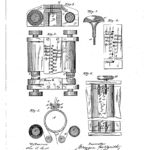 for the Baltimore Board of Health and the 1890 U.S. Census. This technology was not used in elections, but paved the way for future punch card technology. A punch card voting system utilized a pre-printed card attached to a sturdy board. Voters indicated their choice of candidates by punching through the appropriate hole using a stylus or a pen-shaped tool. The removal of a rectangle-shaped chad leaves a hole that is counted as a vote. The completed ballot is either dropped into a ballot box or fed into a computerized vote-tabulating machine.
for the Baltimore Board of Health and the 1890 U.S. Census. This technology was not used in elections, but paved the way for future punch card technology. A punch card voting system utilized a pre-printed card attached to a sturdy board. Voters indicated their choice of candidates by punching through the appropriate hole using a stylus or a pen-shaped tool. The removal of a rectangle-shaped chad leaves a hole that is counted as a vote. The completed ballot is either dropped into a ballot box or fed into a computerized vote-tabulating machine.
Two types of punch cards systems have been in use, the Votomatic and the DataVote. The Votomatic cards have numbers that correspond to each hole. The list of candidates or ballot issues are printed separately and located inside the voting booth for reference. The DataVote ballot has the names of the candidates or ballot issues printed directly next to the punch hole. Joseph P. Harris, was granted a patent pertaining to Votomatic on August, 17, 1965 (DATA REGISTERING DEVICE, U.S. Patent No. 3,201,038).
Mark-Sense (Optical Scanner). Mark-Sense voting systems utilize pre-printed ballots with the candidates’ names or the ballot issues with an empty box, circle, rectangle, or arrow next to them. Voters indicate their vote by filling in the appropriate box, circle, or the like, using a black marker. The ballots are fed through a computerized vote-tabulating machine. The computer recognizes the darkest marks as votes and records them. James O. Narey and William Saylor were granted a patent in 1977, for a precinct-based optical scan system (U.S. Patent No. 4,021,780). This is considered the first model of the modern precinct-based optical scan systems that are in use today.
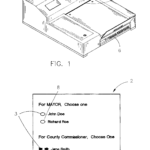 Ballot scanner systems developed by Election Systems and Software (ES&S) are examples of typical of central-count optical mark sense systems. Models differ in speed to accommodate various situations. Models with slower speeds suit small counties and are needed for processing absentee ballots that have been folded for mailing. Models with faster speeds suit counties with larger populations. An example of an ES&S patent for scanning is METHOD OF ANALYZING MARKS MADE ON A RESPONSE SHEET (U.S Patent no. 6,854,644).
Ballot scanner systems developed by Election Systems and Software (ES&S) are examples of typical of central-count optical mark sense systems. Models differ in speed to accommodate various situations. Models with slower speeds suit small counties and are needed for processing absentee ballots that have been folded for mailing. Models with faster speeds suit counties with larger populations. An example of an ES&S patent for scanning is METHOD OF ANALYZING MARKS MADE ON A RESPONSE SHEET (U.S Patent no. 6,854,644).
Direct Recording Electronic (DRE) Voting Machines. McKay, Ziebold, and Kirby et al. developed a concept for an electronic voting machine, known as Video Voter for which they were granted a patent on February 19, 1974 (U.S. Patent No. 3,793,505). This patent was developed further by McKay, Smith & Deutsch for a commercial design of the Video Voter system. A patent was granted for this on May 24, 1977, (U.S. Patent No. 4,025,757), and may have been the first direct-recording electronic voting system to be used in government elections. DRE voting machines were the most 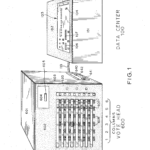 technologically advanced voting systems to be developed during the 20th century. The most commonly used DRE voting machines are the Electrovote 2000 and the Microvote. Since they are computerized, a hard copy ballot is not needed. The Electrovote 2000 is basically a pc and votes are cast by using a touch screen or push button. A keyboard is attached for write in votes. The votes are stored on a memory chip, diskette, or smart card. The Microvote is one of the older versions of DRE voting machines. The machine uses push-buttons to register a vote from a pre-printed ballot that is protected behind a window between the rows of buttons. The voter pushes the appropriate button to vote; a light indicates that a choice has been recorded.
technologically advanced voting systems to be developed during the 20th century. The most commonly used DRE voting machines are the Electrovote 2000 and the Microvote. Since they are computerized, a hard copy ballot is not needed. The Electrovote 2000 is basically a pc and votes are cast by using a touch screen or push button. A keyboard is attached for write in votes. The votes are stored on a memory chip, diskette, or smart card. The Microvote is one of the older versions of DRE voting machines. The machine uses push-buttons to register a vote from a pre-printed ballot that is protected behind a window between the rows of buttons. The voter pushes the appropriate button to vote; a light indicates that a choice has been recorded.
From clay tokens to touch-screen polling systems, voting methods have come a long way. With today’s ever-changing technology and innovation, expect to see changes in voting methods and mechanisms on the horizon.
